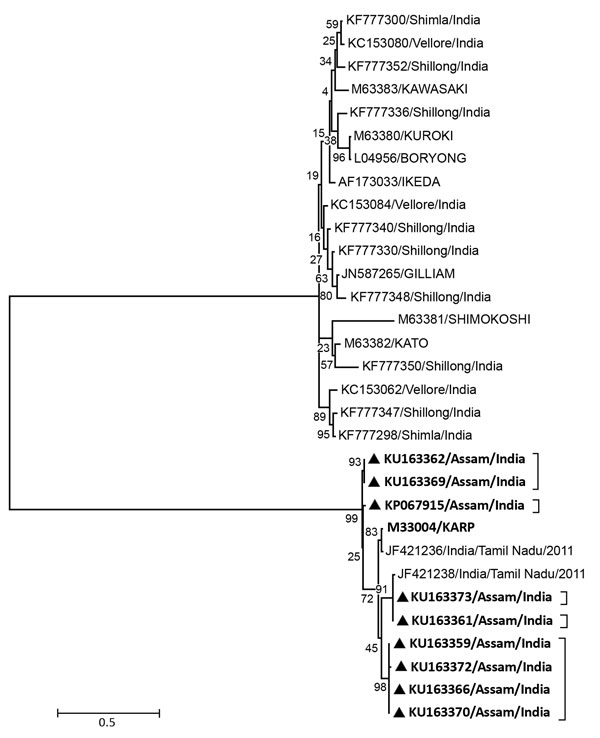Volume 23, Number 1—January 2017
Letter
Scrub Typhus Leading to Acute Encephalitis Syndrome, Assam, India
Figure

Figure. Dendrogram representing Orientia tsutsugamushi sequences (black triangles) from patients with acute encephalitis syndrome, Assam, India, 2013–2015. The phylogenetic tree was constructed on a 56-kDa outer membrane protein gene of O. tsutsugamushi. The evolutionary history was inferred by using the maximum-likelihood method based on the Tamura 3-parameter model. Our sequences are found within the brackets. Bold indicates the KARP genotype. Scale bars indicate nucleotide substitutions per site.
Page created: December 16, 2016
Page updated: December 16, 2016
Page reviewed: December 16, 2016
The conclusions, findings, and opinions expressed by authors contributing to this journal do not necessarily reflect the official position of the U.S. Department of Health and Human Services, the Public Health Service, the Centers for Disease Control and Prevention, or the authors' affiliated institutions. Use of trade names is for identification only and does not imply endorsement by any of the groups named above.